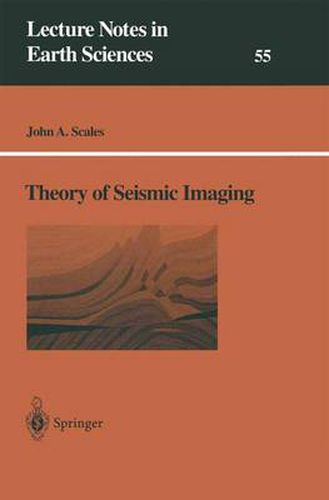Readings Newsletter
Become a Readings Member to make your shopping experience even easier.
Sign in or sign up for free!
You’re not far away from qualifying for FREE standard shipping within Australia
You’ve qualified for FREE standard shipping within Australia
The cart is loading…






This title is printed to order. This book may have been self-published. If so, we cannot guarantee the quality of the content. In the main most books will have gone through the editing process however some may not. We therefore suggest that you be aware of this before ordering this book. If in doubt check either the author or publisher’s details as we are unable to accept any returns unless they are faulty. Please contact us if you have any questions.
Seismic imaging methods are currently used to produce images of the Earth’s subsurface properties at diverse length scales, from high-resolution, near-surface environmental studies for oil and gas exploration to long-period images of the entire planet. This book presents the physical and mathematical basis of imaging algorithms in the context of controlled-source reflection seismology. The approach taken is motivated by physical optics and theoretical seismology. The theory is constantly put into practice via a graded sequence of computer exercises using the widely available SU (Seismic Unix) software package. The material covered in this book is more than enough for a one-semester graduate course in seismic imaging, by the end of which students will not only be writing their own migration codes, patterned on codes in the book, but will be well-prepared to read the current literature.
$9.00 standard shipping within Australia
FREE standard shipping within Australia for orders over $100.00
Express & International shipping calculated at checkout
This title is printed to order. This book may have been self-published. If so, we cannot guarantee the quality of the content. In the main most books will have gone through the editing process however some may not. We therefore suggest that you be aware of this before ordering this book. If in doubt check either the author or publisher’s details as we are unable to accept any returns unless they are faulty. Please contact us if you have any questions.
Seismic imaging methods are currently used to produce images of the Earth’s subsurface properties at diverse length scales, from high-resolution, near-surface environmental studies for oil and gas exploration to long-period images of the entire planet. This book presents the physical and mathematical basis of imaging algorithms in the context of controlled-source reflection seismology. The approach taken is motivated by physical optics and theoretical seismology. The theory is constantly put into practice via a graded sequence of computer exercises using the widely available SU (Seismic Unix) software package. The material covered in this book is more than enough for a one-semester graduate course in seismic imaging, by the end of which students will not only be writing their own migration codes, patterned on codes in the book, but will be well-prepared to read the current literature.